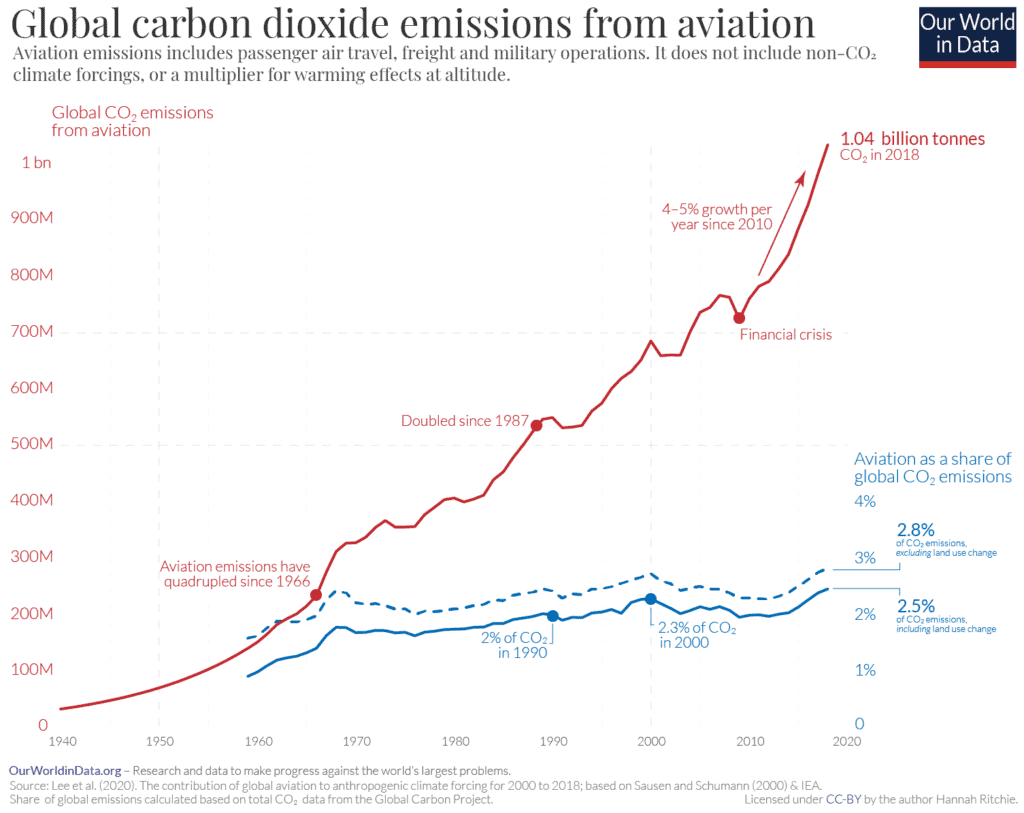If you ever tried finding a flight on Google, you likely came across Google Flights. The ticket search engine appears near the top of the search results and allows to go through the web and search for flights and prices. As one of its features, it allows users to estimate the emissions generated by each journey. Google says that the feature helps to make “more sustainable travel choices.”
But here’s the catch. Last month, Google decided to exclude all global warming impacts of flying except carbon dioxide (CO2), the BBC found. Climate experts said that Google’s calculations now represent only half of the real impact on the climate of flights. That’s concerning, especially with 9 out of 10 online searches done through Google.

Google previously reported emissions in kilograms of carbon dioxide equivalent (CO2e), which includes other emissions aside from CO2, such as water vapor emitted as part of the plane’s contrails. After the change, Google started reporting just the CO2, claiming it was impossible to accurately estimate CO2 for every given flight.
“We strongly believe that non-CO2 effects should be included in the model, but not at the expense of accuracy for individual flight estimates,” Google said. “To address this issue, we’re working closely with leading academics on soon-to-be-published research to better understand how the impact of contrails varies based on critical factors.”
Google didn’t make any public announcement when the change was implemented, except for a note published to a developer account on Github, as the BBC reported. Environmentalists questioned the move, such as Greenpeace’s UK’s chief scientist Doug Parr, who said the tech giant could have found other alternative solutions.
It’s not all about CO2
Carbon dioxide is the leading contributor to human-caused global warming. It’s alarmingly abundant in the atmosphere, reaching 418.9 parts per million (ppm) last month, compared to 278ppm in pre-industrial times. This makes it understandable for countries and companies to focus on CO2 emissions to try to stop global warming.

However, CO2 isn’t the only greenhouse gas out there. In fact, the carbon emissions released from jet fuel could be only “the tip of the iceberg” as far as aviation’s footprint is concerned, according to a recent report by Transport & Environment, a global group of organizations working to reduce transport’s environmental impact.
Aircraft engines release suplhur dioxide, nitroux oxide and particulates such as soot when fuel is burnt. These emissions can affect the chemical and physical properties of the atmosphere at high altitudes, leading to an increase in greenhouse gases and the formation of contrails (line-shaped clouds produced by an aircraft engine exhaust).
Overall, aviation accounts for 2.5% of our global emissions. The aviation sector wasn’t included in the Paris Agreement, so emissions reductions have been largely voluntary. Emissions have increased by 50% since 2000 and the industry is expected to grow by over 4% every year for the next two decades, according to the International Energy Agency.









